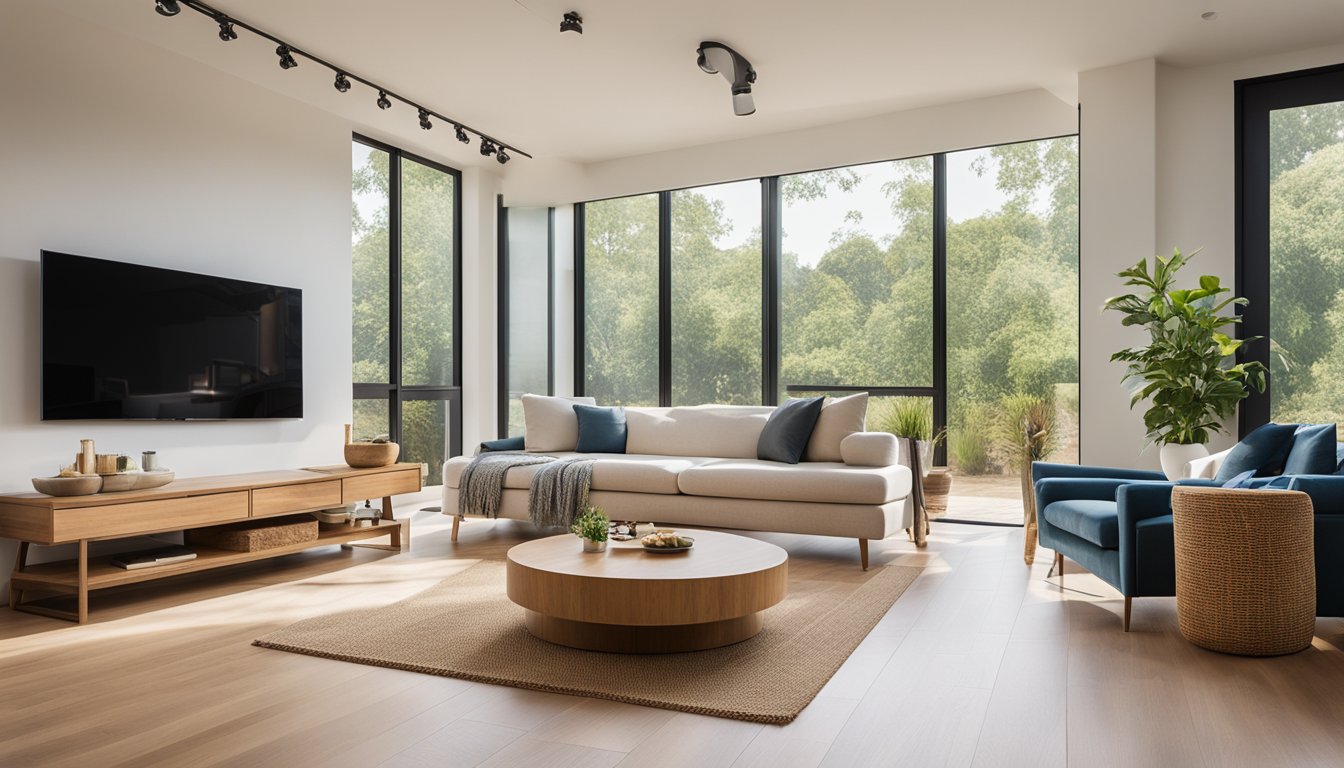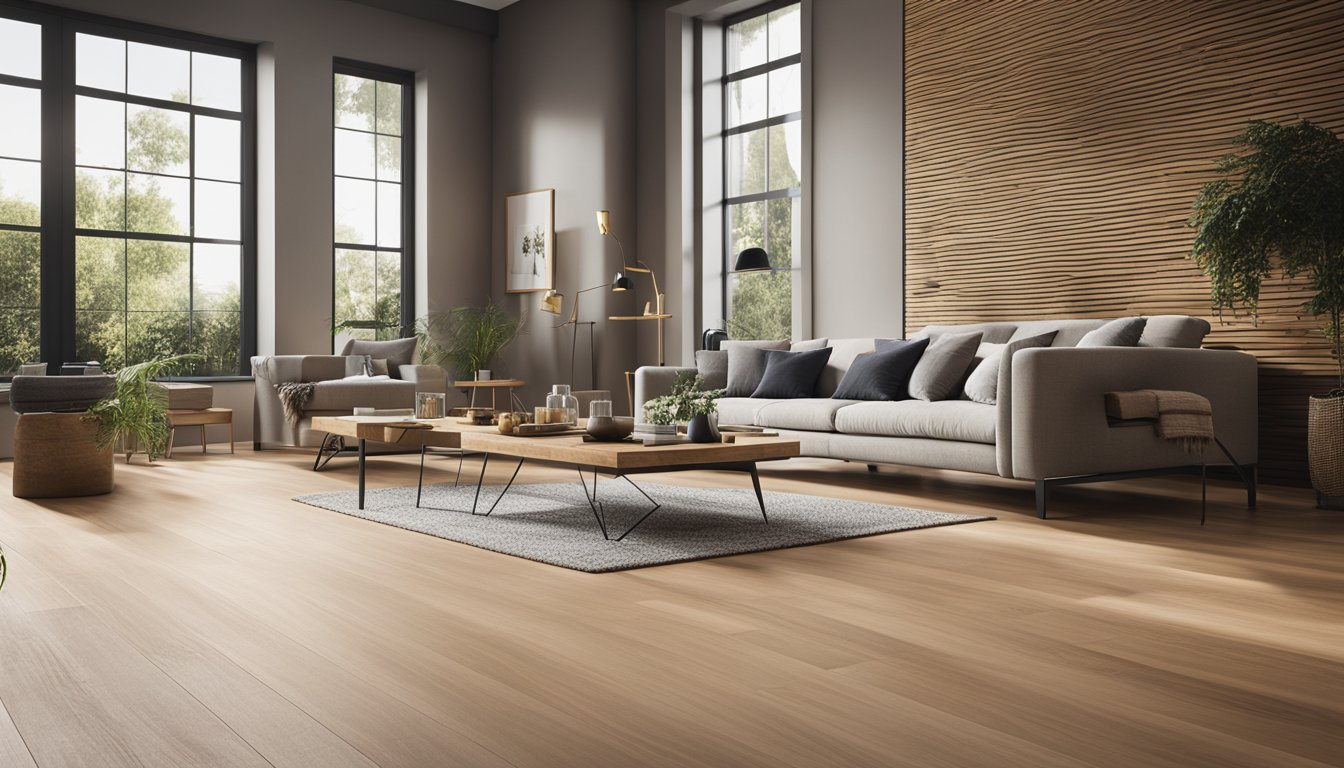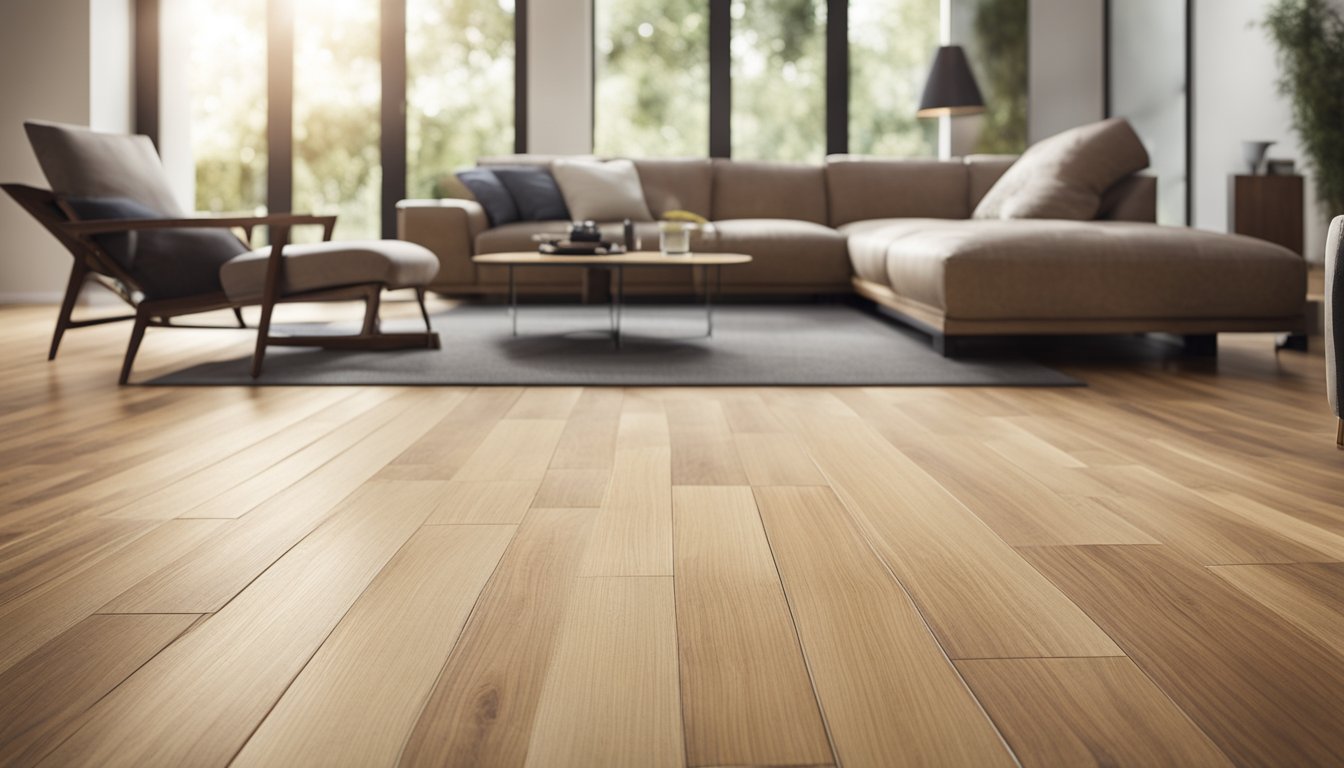Late updated: 09 Jul 2024 10:07
Written by: Daniel Harper
Sustainable Flooring Options For Modern Homes: Eco-Friendly Choices for Stylish Living
Exploring sustainable flooring options can fundamentally transform the way we design our living spaces. As environmental awareness grows, many homeowners are seeking eco-friendly alternatives that don't compromise on style or comfort. From bamboo's rapid renewability to cork's unique combination of softness and durability, sustainable flooring materials offer versatile and attractive solutions for modern homes.

Choosing the right eco-friendly flooring is a vital step in reducing our carbon footprint while ensuring our homes remain stylish and functional. Each material comes with its own set of advantages, whether it's the warm allure of reclaimed wood or the practical benefits of recycled tiles. Understanding the distinct benefits of these materials can guide us in making informed decisions that align with both our aesthetic preferences and our commitment to the environment.
Incorporating sustainable flooring into our living spaces not only benefits the planet but also contributes to a healthier indoor environment. Many of these materials, such as natural linoleum and bamboo, are free from harmful chemicals often found in conventional flooring. This means cleaner air quality and a safer home for our families, making sustainable choices the smart choice for conscientious homeowners.
Key Takeaways
- Sustainable flooring options support eco-friendly and stylish home design.
- Choosing eco-friendly flooring is crucial for reducing carbon footprints.
- Sustainable materials often offer health benefits and environmental advantages.
Essential Considerations for Selection
Choosing the right sustainable flooring for your home requires attention to its environmental impact, the material properties, and the health benefits it offers, particularly concerning indoor air quality.
Evaluating Environmental Impact
When selecting flooring, assessing its environmental impact is crucial. Renewable materials like bamboo and cork are excellent options since they reduce reliance on non-renewable resources.
We should also consider the carbon footprint of the material. Locally sourced materials tend to have a smaller footprint due to reduced transportation emissions. Recycled materials provide a way to repurpose resources that might otherwise go to waste, aiding in the reduction of overall environmental damage.
Furthermore, examining the entire life cycle of the flooring material—from production to disposal—helps in understanding its long-term sustainability. Materials that are biodegradable or recyclable at the end of their life cycle are preferable for a sustainable home.
Understanding Material Properties
The physical properties of your chosen flooring material have a significant impact on its suitability. Materials like engineered wood and bamboo are not only durable but also resistant to moisture, extending their longevity in various home environments.
Cork flooring, known for its thermal and acoustic insulation, offers comfort underfoot, making it suitable for various settings. Additionally, the strength and durability of the flooring material will determine its ability to withstand daily wear and tear, making it a crucial consideration for homeowners.
Versatility in design also matters—materials available in different colours and patterns can be integrated seamlessly into modern home styles, providing both aesthetic appeal and functional benefits.
Health and Indoor Air Quality
The health implications of flooring choices are important for creating a safe indoor environment. Volatile organic compounds (VOCs) are chemicals released from many building materials, including flooring, which can affect indoor air quality.
Choosing low VOC or VOC-free flooring options reduces the potential for indoor air pollution. This is essential for maintaining a healthy living space, particularly for those with allergies or respiratory issues.
Hypoallergenic options like cork flooring can also improve indoor air conditions. By choosing materials free from excessive toxins and adhesives, we contribute to a healthier, more comfortable home environment.
In the end, balancing sustainability, durability, and indoor health concerns will guide us towards the most suitable flooring options for a modern, eco-friendly home.
Popular Sustainable Flooring Options

In exploring sustainable flooring solutions, we find several excellent materials that combine aesthetics, durability, and eco-friendliness. Below, we examine options derived from natural and renewable resources, those made from recycled and repurposed materials, and innovations in sustainable technology, highlighting their unique benefits and practicalities.
Natural and Renewable Resources
Cork Flooring: Harvested from the bark of cork oak trees, cork flooring is a renewable material with a comfortable, cushioned feel underfoot. It is naturally resistant to mould, mildew, and pests, making it low maintenance. Cork trees can be stripped of their bark every nine years without harm, ensuring sustainability.
Bamboo Flooring: As a fast-growing grass, bamboo is a highly renewable resource. Bamboo flooring is as durable as many hardwood options and often more affordable. It offers a natural look that fits various design aesthetics. Engineered bamboo flooring provides additional stability and moisture resistance compared to traditional solid bamboo.
Linoleum: Made from natural materials like linseed oil, wood flour, and jute, linoleum is a robust and biodegradable option. Its natural composition makes it free from volatile organic compounds (VOC), contributing to better indoor air quality. Available in a variety of colours and patterns, it caters to diverse design preferences.
Recycled and Repurposed Materials
Reclaimed Wood Flooring: Using reclaimed wood from old buildings and barns reduces demand for new timber and minimises waste. Reclaimed wood offers a unique, rustic charm and sophistication, with rich patinas and historical character. This type of flooring often comes with certifications like the Forest Stewardship Council (FSC) mark, ensuring its sustainable origins.
Recycled Glass Tiles: Composed of post-consumer glass, these tiles are an eco-friendly choice with striking visual appeal. Easy to clean and maintain, they are ideal for areas prone to moisture, such as kitchens and bathrooms. The myriad colour and texture options allow for creative and unique flooring designs.
Engineered Wood Flooring: Combining a thin layer of real hardwood with high-quality plywood, engineered wood flooring utilises less timber than solid hardwood. This makes it a more ecologically sound choice. Products certified by FloorScore or FSC ensure that they meet stringent environmental and health standards.
Innovations in Sustainable Technology
Modern Laminate Flooring: Recent advancements have produced laminate flooring that uses sustainable and recyclable materials. Around 85% of modern laminate materials can be recycled, reducing their environmental impact. These floorings can mimic various finishes, including wood and stone, often at a lower cost and with greater durability.
Engineered Hardwood: By using a top layer of hardwood with a core of plywood or high-density fibreboard, engineered hardwood maximises the use of precious wood resources. It is often more stable and less prone to warping, making it suitable for areas with fluctuating moisture levels. Many manufacturers adhere to environmental certifications, ensuring sustainable practices.
Water-Resistant Innovations: Newer sustainable flooring technologies include enhanced water resistance, making these options suitable for bathrooms and kitchens. For instance, certain types of engineered bamboo flooring are treated to resist moisture and maintain durability, offering both eco-friendliness and practical benefits.
Our choices in sustainable flooring not only contribute to environmental conservation but also offer the versatility, durability, and style that modern homes demand.
Frequently Asked Questions

We've gathered some common questions and detailed responses regarding sustainable flooring options for modern homes.
Which flooring materials are considered the most environmentally friendly for a contemporary home?
Several materials stand out for their eco-friendliness, including bamboo, cork, and reclaimed wood. These options are renewable and have a lower environmental impact compared to traditional flooring materials. Additionally, recycled materials in laminate and carpets are becoming more popular for their reduced footprint.
How does cork flooring compare in terms of sustainability and durability for residential use?
Cork flooring is a remarkable sustainable choice. It's harvested from the bark of the cork oak tree, which regenerates after harvesting, making it a renewable resource. Cork is also durable and provides a comfortable, resilient surface underfoot, ideal for residential applications.
In what ways does bamboo serve as an eco-friendly flooring solution for modern properties?
Bamboo grows exceptionally fast, which makes it a renewable resource. Although technically a grass, it's processed to perform similarly to hardwood. Its rapid growth rate and minimal need for pesticides or herbicides make bamboo a sustainable and stylish option for contemporary homes.
What factors should one consider when assessing the cost-effectiveness of sustainable flooring options?
When evaluating cost-effectiveness, consider not just the initial price but also durability, maintenance costs, and lifespan. Sustainable flooring may have higher upfront costs, but long-term savings through reduced maintenance and replacement costs can make them more economical over time.
Can eco-friendly waterproof flooring provide the same level of quality and style as traditional materials?
Yes, many eco-friendly waterproof flooring options, such as certain engineered vinyl or laminated materials, match the style and quality of traditional materials. These products offer durability and various aesthetic choices while ensuring low VOC emissions and recycling capabilities.
What choices are available for non-toxic flooring in contemporary house design?
Non-toxic flooring options include natural linoleum, which is made from linseed oil, cork dust, and wood flour. Other alternatives include untreated hardwood and natural stone, which do not emit harmful substances. These materials contribute to healthier indoor air quality.
